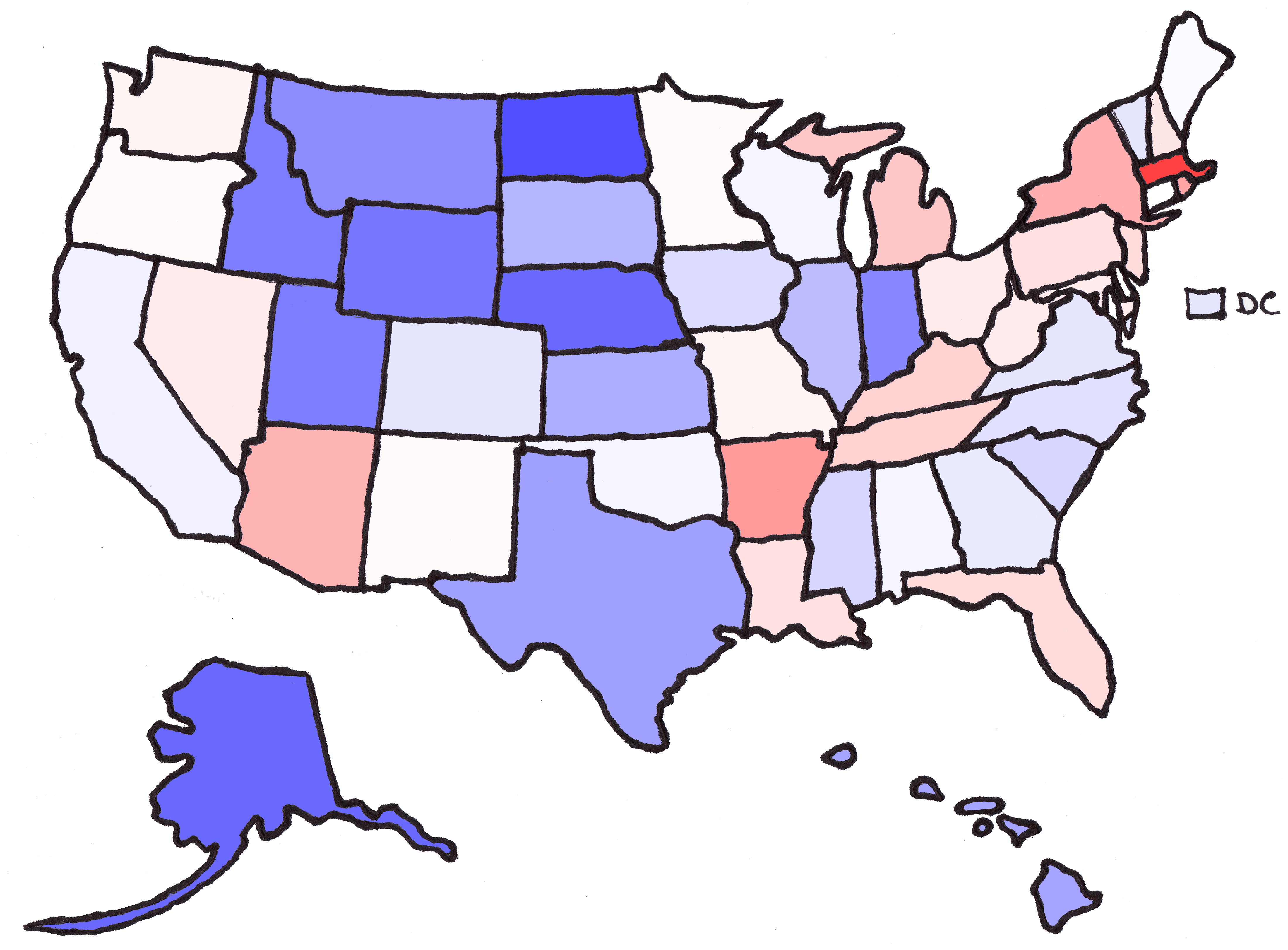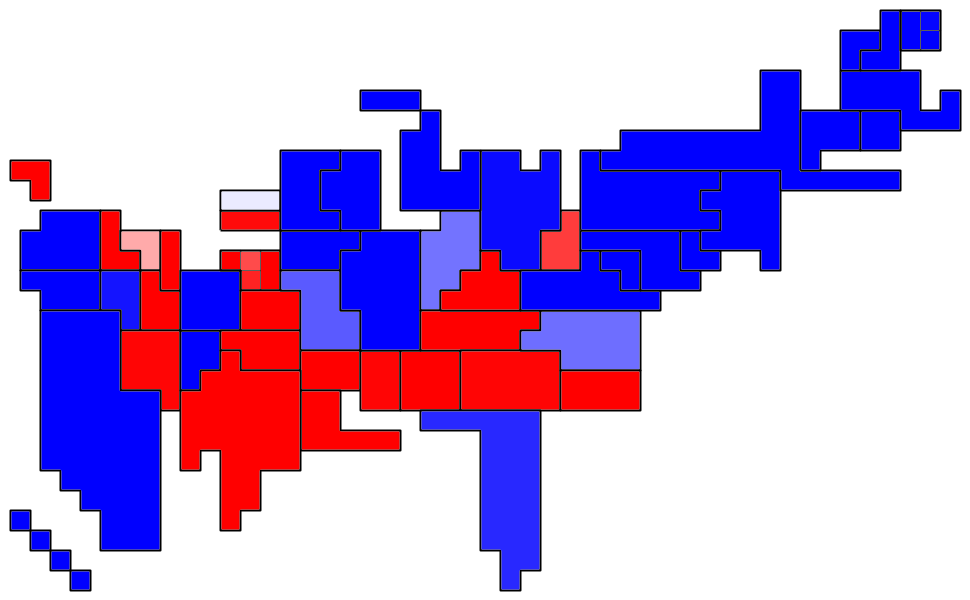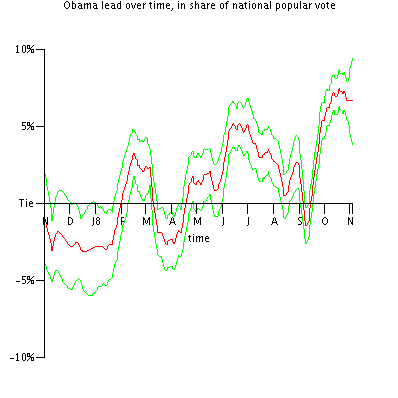Political shifts since 2004 by state
This map shows the change in each state from 2004 to present, relative to the national change. That means that, for example, OH is slightly red even though Obama is doing better there there Kerry did, since Obama has improved even more nationally than in OH. This map corresponds to the "trend" maps at Dave Leip's Atlas.

The states with big shifts fall into some obvious groups, some of which may overlap:
- Home States
- MA was Kerry's home state, so Obama does much worse there than Kerry did; similarly, TX was Bush's home state, so McCain does much worse there than Bush did. In the reverse direction, Obama and McCain do better in their home states of IL/HI and AZ than Kerry and Bush did. Just to highlight the irrelevance of vice presidential nominees, a VP-less Obama is actually improving on Kerry/Edwards in NC.
- Clinton States
- Obama is doing way worse in AR and NY than nationally, states where there are probably concentrations of disappointed Clinton supporters. Aside from Clinton's home states, I notice that, by and large, Obama seems to be doing poorly in states where Clinton did well in the primary. There are two explanations: People there were Clinton supporters who are now bitter over her loss, and have therefore turned away from Obama. Or, people there didn't like Obama during the primaries and still don't like him. I tend to favor the second explanation.
- Cheaters
- FL and MI scheduled their primaries earlier than the rules allowed, and then got their convention votes fully stripped by the Democrats (and partially stripped by Republicans).
- Rust Belt
- MI, OH, and PA. In addition to adding foreign policy expertise to the ticket, I think that the pick of Biden is intended to help Obama among white working-class Democrats and independents in these important states. OH is surprising to me, given the collapse of the Republican brand in that state.
- Mountain West
- Obama's overperformance in the West has been stunning. Part of it may be that Kerry was unappealing to Western voters, so that Obama's strength is just the consummation of a Democratic improvement in the West that started several years ago. This includes AK, where Republicans are having a terrible year. McCain has surprisingly failed to use his experience in land and water issues to any advantage, recently suggesting a renegotiation of Colorado River rights. Oddly enough, the convention state of CO has been among Obama's weakest in the West, but that may change after the convention.
- Black Belt
- The states from AL to NC with large Black populations that may be energized by Obama's candidacy.
- Indiana
- I can't explain why Obama would improve so much in IN, when he's trending down in MI, OH, and KY. His improvement in IN is even greater than IL.
By the way, if anyone else needs a non-detailed outline map of the US that's easy to bucket-fill, it's here.
It's not perfect, and I regret the decision to turn the Aleutian Islands into a peninsula, but it's serviceable.Read more (maybe)!





